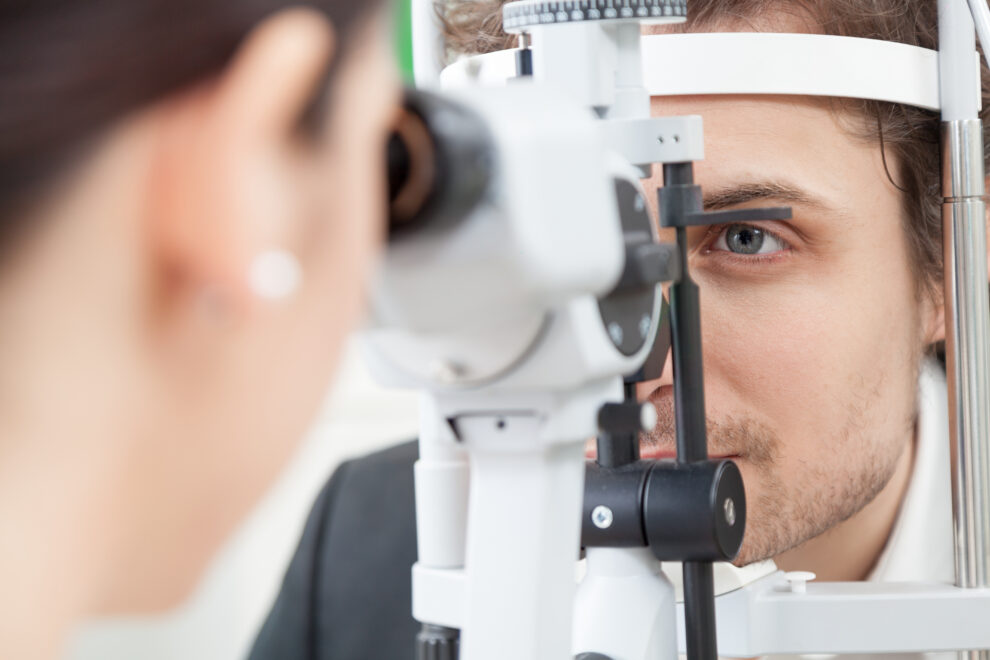Cornea
Introduction to the Cornea
The cornea is the transparent, dome-shaped front part of the eye. It plays a crucial role in focusing vision by bending and refracting light that enters the eye. The cornea is composed of five layers, each with its own function, and it is rich in nerve fibers, making it highly sensitive.

Common Corneal Conditions
Keratoconus
Keratoconus is a progressive eye condition in which the cornea thins and bulges into a cone-like shape, causing distorted and blurred vision. It typically affects both eyes and can lead to severe visual impairment
Corneal Ulcer
A corneal ulcer is an open sore on the cornea, often caused by infection or injury. It can lead to pain, redness, and vision loss if not treated promptly.
Dry Eye Syndrome
Dry eye syndrome occurs when the eyes do not produce enough tears or the tears evaporate too quickly, leading to irritation, discomfort, and blurred vision. It can affect the health of the cornea over time.
Fuchs’ Dystrophy
Fuchs’ dystrophy is a genetic condition that affects the innermost layer of the cornea, leading to swelling, clouding, and gradual vision loss.
Pterygium
Pterygium is a non-cancerous growth of tissue on the cornea, often related to prolonged exposure to UV light or irritants. It can interfere with vision if it grows large enough.
Corneal Abrasion
A corneal abrasion is a scratch or injury to the surface of the cornea, causing pain, redness, and sensitivity to light.
Diagnostic Techniques
Various advanced diagnostic techniques are used to assess corneal health and diagnose conditions accurately.
Corneal Topography
Corneal topography is a non-invasive imaging technique that maps the curvature and shape of the cornea, helping to diagnose conditions like keratoconus.
Specular Microscopy
Specular microscopy is used to examine the innermost layer of the cornea (endothelium) and assess its health, particularly in cases of Fuchs’ dystrophy.
Pachymetry
Pachymetry measures the thickness of the cornea, which is important in diagnosing conditions like keratoconus and monitoring the risk of glaucoma.
Treatment Options
Effective management of corneal conditions often involves a combination of medical interventions, lifestyle changes, and in some cases surgery.
Corneal Transplant
In cases of severe corneal damage or disease, a corneal transplant may be necessary. This involves replacing the damaged cornea with a healthy donor cornea.
Collagen Cross-Linking
Collagen cross-linking is a treatment for keratoconus that strengthens the cornea by using ultraviolet light and riboflavin drops.
Corneal Inlays and Onlays
These are small devices implanted into the cornea to improve vision, particularly in cases of presbyopia or keratoconus.
Antibiotics and Antiviral Medications
For corneal ulcers caused by infections, appropriate antibiotics or antiviral medications are prescribed to treat the underlying cause.
Lubricating Eye Drops
For dry eye syndrome, lubricating eye drops or artificial tears can help maintain moisture and protect the cornea.
Prevention and Lifestyle
Prevention and lifestyle choices play a significant role in maintaining good eye health.
Wearing Protective Eyewear
Protecting your eyes from injury and harmful UV rays by wearing sunglasses or protective goggles can help prevent corneal damage.
Maintaining Good Eye Hygiene
Regularly cleaning and caring for contact lenses, and avoiding rubbing the eyes, can reduce the risk of corneal infections and abrasions.
Managing Systemic Health Conditions
Controlling conditions like diabetes and maintaining a healthy lifestyle can reduce the risk of corneal complications.
Regular Eye Exams
Routine eye exams are essential for early detection of corneal issues and other eye conditions, especially for individuals at higher risk.
Disclaimer: This webpage is intended for informational purposes only and does not replace professional medical advice. If you suspect you have dry eyes or are experiencing any eye-related symptoms, please consult with an eye care specialist for a proper evaluation and treatment plan.
